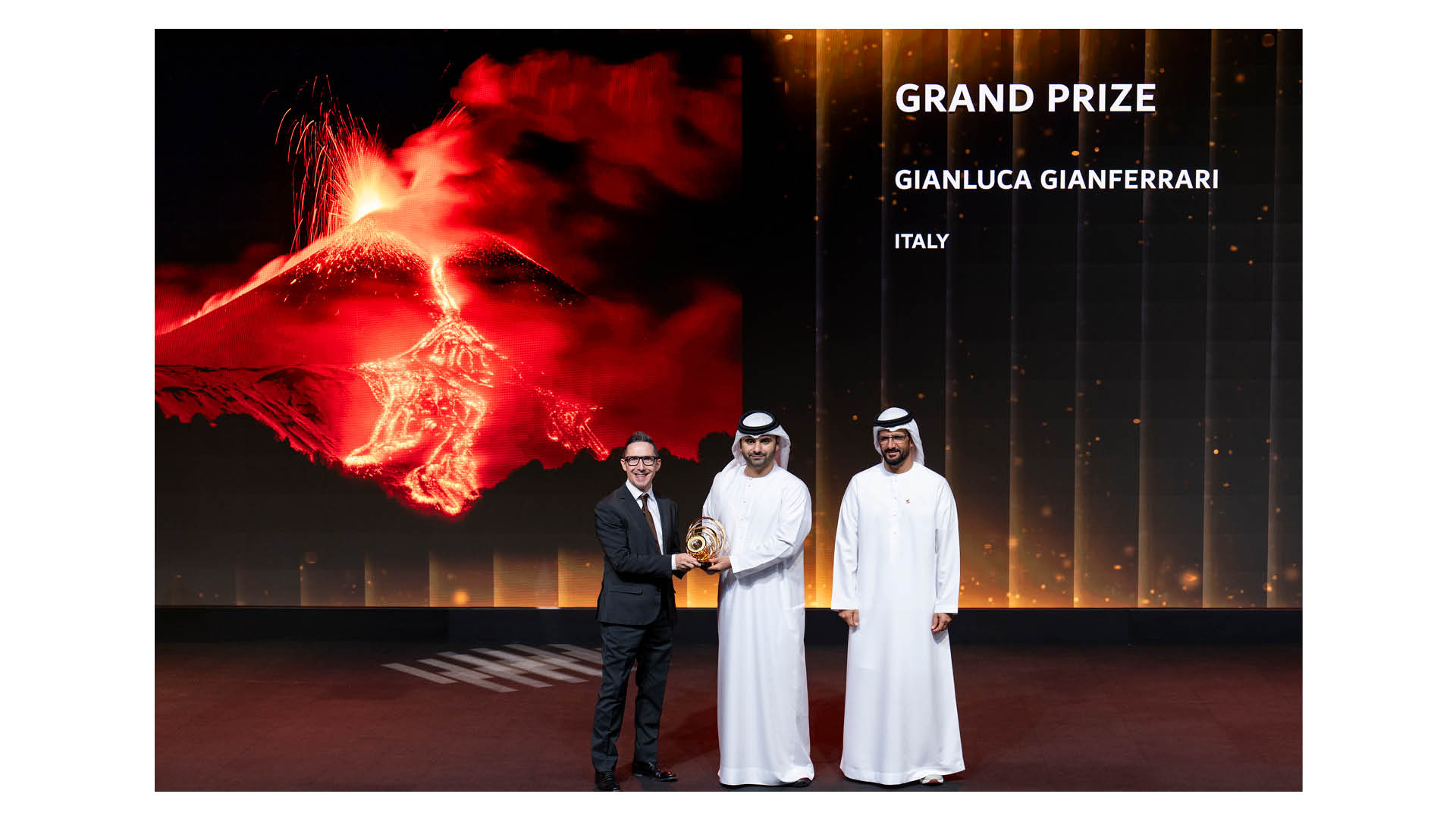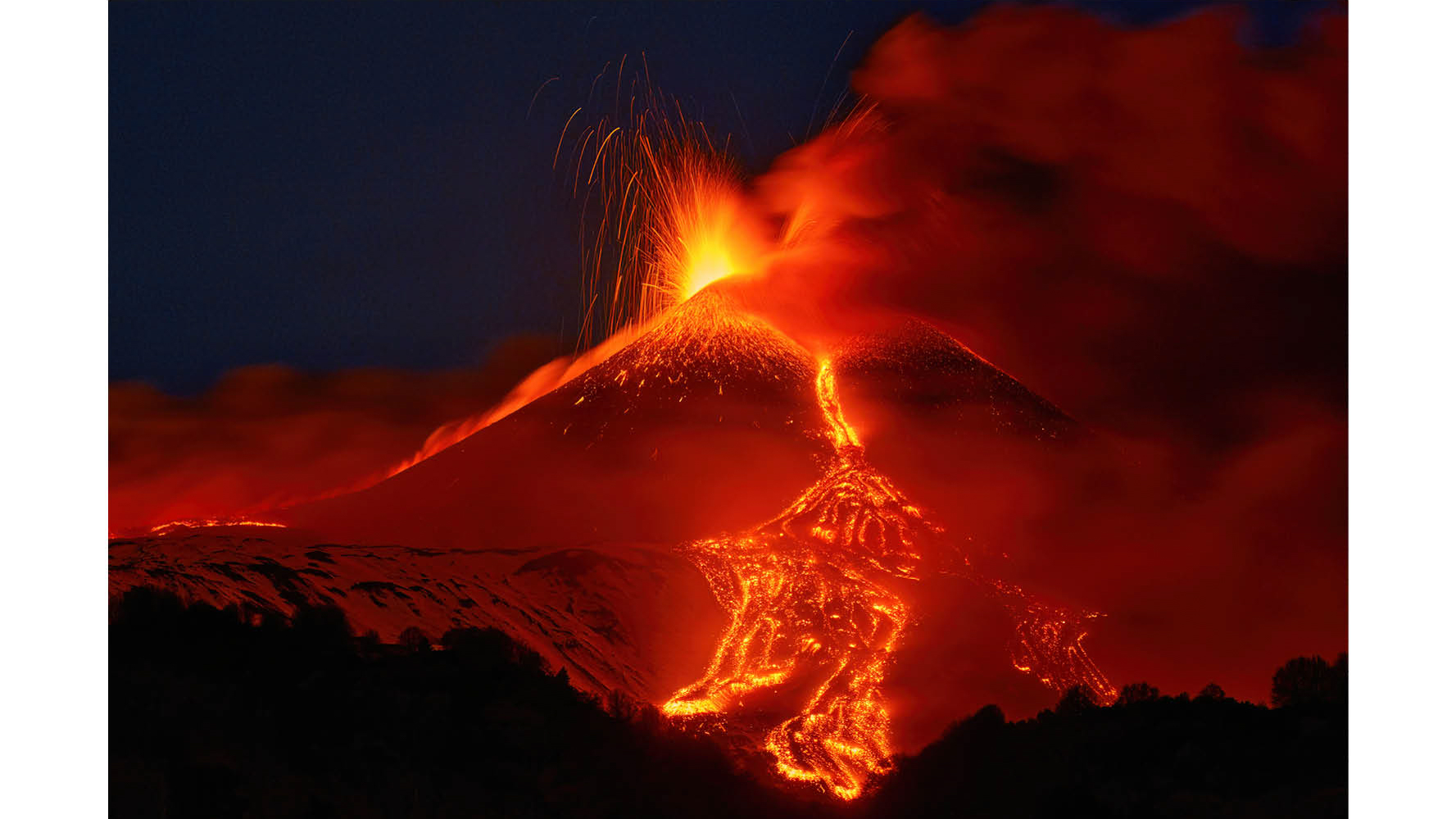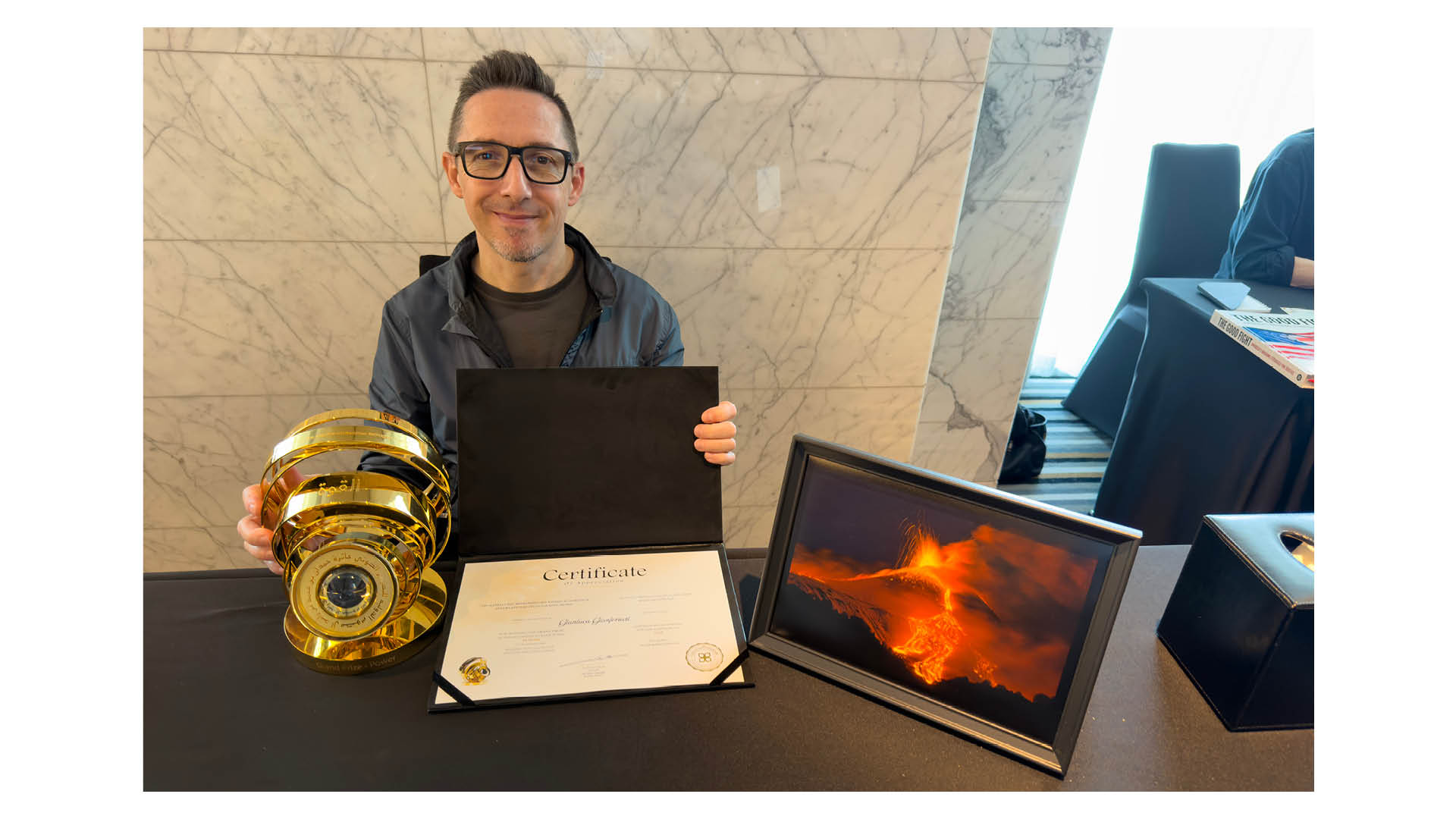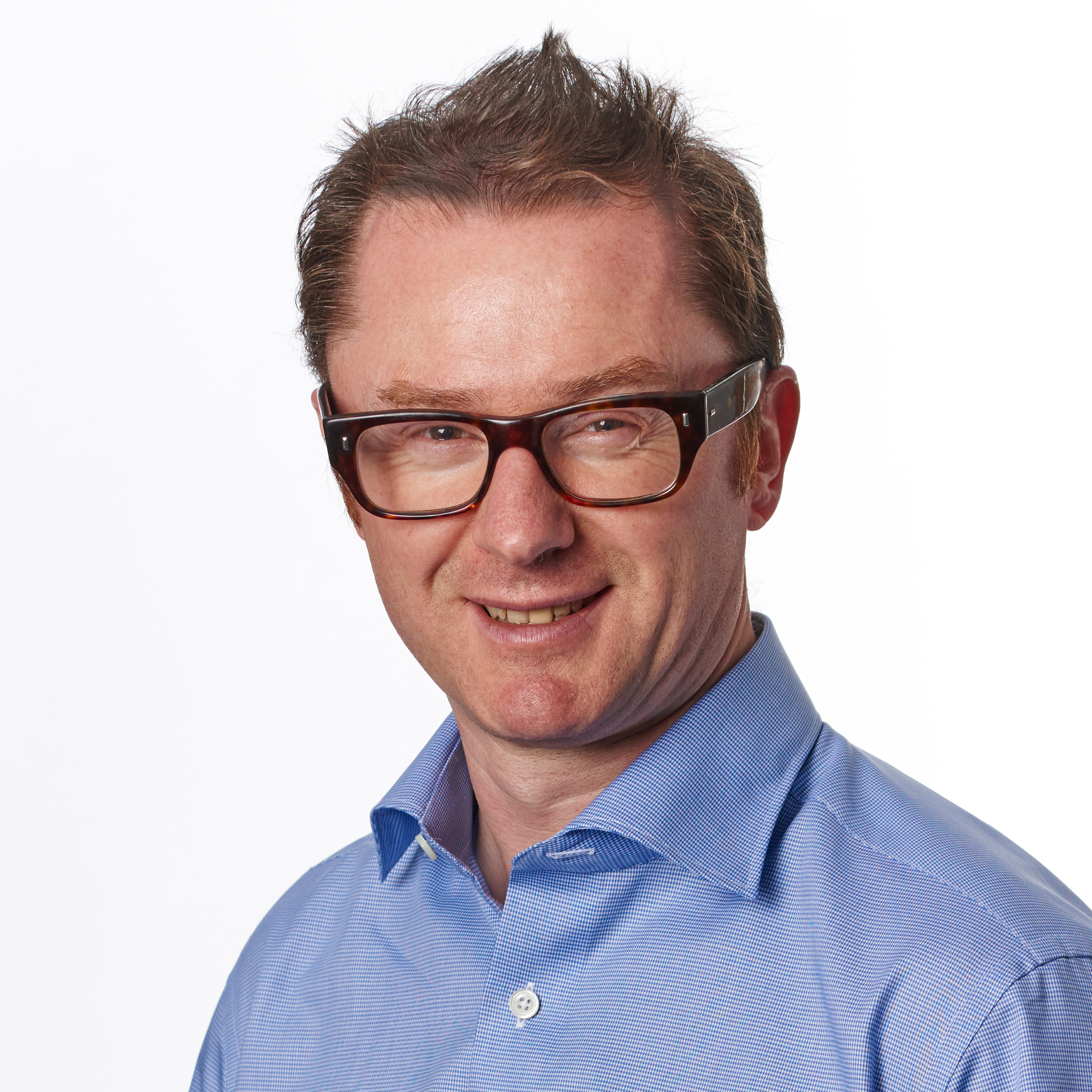'Maybe I'll buy a new camera… or a new apartment!' Photographer who won $200,000 prize tells the dramatic story behind his award-winning shot
Gianluca Gianferrari bagged US$200,000 for his volcano eruption photo in the 14th season of this leading international photo award

Italian photographer Gianluca Gianferrari only does photography in his spare time, but scooped a US$200,000 cash prize in the 2025 HIPA Awards.
Themed 'Power', Gianluca's striking photo of a volcano erupting in Sicily, Italy, clearly resonated with the judges.
Captured on a Sony A7R IV with a Sony FE 200-600mm F5.6-6.3 G OSS lens, 'Etna's Paroxysm' was actually the first time Gianluca had managed to capture a volcano erupting, despite having tried several times previously.
And he almost didn't make the trip that led to him getting the shot, having been off work sick with a fever.
But fate – and a friend who persuaded him to fly to Sicily for the eruption – intervened and Gianluca's artistry has been rewarded with a life-changing amount of money thanks to winning the grand prize in the world's richest photo awards.
I sat down with Gianluca after the awards ceremony in Dubai, UAE, to get the story of his winning shot…

How long have you been taking photos?
I started in the 1970s because an older brother had a passion for photography and he taught me. At the beginning of the 1980s, he showed me how to take panning shots of motorcycles, of riders like Kenny Roberts at Imola [a famous racing track in the Emilia-Romagna region of Italy].
So photography has always been something I have enjoyed but I only took it up seriously 11 years ago, when I started to take courses and go out to shoot regularly.
We have to have something to tell, our vision of nature or people or whatever; I shoot mostly nature and landscapes, and also a bit of astrophotography in the landscape.
You're not a full-time photographer, but do you think this will change with your HIPA win?
I work as a bank officer, which takes up many hours, so I don't have much time for myself and for photography projects; maybe when I stop working for the bank I will have more time for photography.
I do get asked to teach photography and take people on photography workshops. Now [I have won the grand prize] I could think about doing that.
Many agencies have contacted me since I was a finalist in International Garden Photographer of the Year and the Epson Pano Award – and now I have now won the grand prize in HIPA, the biggest competition. So maybe I will do more photography.
How did you capture the photo?
I have always wanted to shoot a volcano and went to Iceland and to Sicily many times. The problem is that when there is a paroxysm like this, it lasts for one or two hours, so there isn't time to get to Bologna airport, which is 45 minutes away from where I live, then fly to Catania in Sicily, take a car and shoot the eruption before it finishes.
But when I shot this photo, the paroxysm was slow and constant and had been going on for one week. I was off sick from work with a fever and a friend of mine who lived in Tuscany called me and said we should go to the airport. I told him I wasn't very well but he forced me to do it, so the next day we took the plane to Sicily.
After we left the airport, there was no eruption, and we waited for one day, two days, three days. It was almost 5pm, we went to drink something and heard something like an earthquake.
We rushed to the location and got our cameras out – to start with not where the photo was taken from, but to the left of the frame.
As I started to take photographs, I thought it was raining. My friend said it wasn't rain and we needed to get away immediately. It was actually lapilli [molten rock fragments] so we moved to the position where I took the photo from.
The police had closed a street there, but I needed to get to it because I wanted the volcano perfectly in the center of the frame, and not to one side. I'm a fan of equilibrium and order in my compositions.

Was it a difficult photo to capture?
The difficulty wasn't having to be careful about the yellow highlights, the difficult thing was keeping the telephoto lens and the tripod steady because it was very windy and I wanted to have an exposure time of a few seconds.
We put the camera as close as we could to the ground and parked the car on the right to shield the camera from the wind. That was the only difficulty.
I didn't do much editing, because if you push pictures like this too much then you risk ruining them by creating artifacts. In other pictures I took of this volcano, I did do a lot of editing, like when I shoot astrophotography, but not in this case.
How pleased were you with this photo?
I was so happy – finally, I got my volcano eruption picture. But I didn't think that it would give me success [in photo awards]. I take photos for myself, for the art of it, and for doing something good.
But then I got the confidence to say that this photo could work for HIPA – and when I saw that the theme was 'Power', I knew this was a photo I could enter.
I'm really surprised to have won because I would have been happy to come third, second or first in a category. When third and second place was announced, I thought they had forgotten me, but luckily they hadn't.
It's a considerable amount of money, so will you invest it in photography or use it for something else?
Yes, maybe I'll get a new camera, or a new apartment [laughs]. Everybody's asking me – friends, businesses – to become a photography teacher and run workshops.
I'd like to teach other people and help them to get good results with their photography, or at least to help form their own view, because everybody has got to perfect their view – we shouldn't copy what other photographers are doing.
HIPA will return in 2026, themed 'Family'

The 15th season of HIPA will be themed 'Family'. The competition is free to enter and will open for entries early in 2026. Find out more at www.hipa.ae
The best camera deals, reviews, product advice, and unmissable photography news, direct to your inbox!

Niall is the editor of Digital Camera Magazine, and has been shooting on interchangeable lens cameras for over 20 years, and on various point-and-shoot models for years before that.
Working alongside professional photographers for many years as a jobbing journalist gave Niall the curiosity to also start working on the other side of the lens. These days his favored shooting subjects include wildlife, travel and street photography, and he also enjoys dabbling with studio still life.
On the site you will see him writing photographer profiles, asking questions for Q&As and interviews, reporting on the latest and most noteworthy photography competitions, and sharing his knowledge on website building.
You must confirm your public display name before commenting
Please logout and then login again, you will then be prompted to enter your display name.
